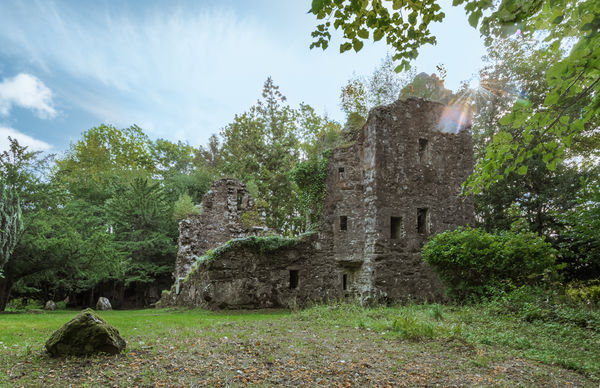When Do Use Exposure Compensation
Feb 14, 2019 09:43:11 #
jerryc41 wrote:
I've never used it. Maybe I'm missing out on something - or maybe not.
https://www.lightstalking.com/why-use-exposure-compensation/
http://www.diyphotography.net/use-exposure-compensation/
https://digital-photography-school.com/ev-compensation-explained/
https://photographylife.com/what-is-exposure-compensation?utm_term=2017-06-29#utm_source=rss&utm_medium=rss&utm_campaign=what-is-exposure-compensation
https://www.lightstalking.com/why-use-exposure-compensation/
http://www.diyphotography.net/use-exposure-compensation/
https://digital-photography-school.com/ev-compensation-explained/
https://photographylife.com/what-is-exposure-compensation?utm_term=2017-06-29#utm_source=rss&utm_medium=rss&utm_campaign=what-is-exposure-compensation
I never use it either and I miss the space where the EC control is. It would be better served if they designed it for other settings.
Feb 14, 2019 10:07:35 #
Linda From Maine wrote:
I switched from dslr to M4/3 just under two years ago. Isn't that live exposure mode awesome?!
Linda,
Which 4/3 camera are you using now? A friend is looking to make the switch and is in the camera research mode.
Feb 14, 2019 12:05:46 #
khorinek wrote:
For Canon, EC will not work in manual mode. Shoot in Shutter (Tv) mode, set your shutter speed and ISO, or use auto ISO, and move the EC up or down 1/3 stop at a time. The Aperture will adjust as needed but your camera will adjust exposure according to the EC.
Some of the newer Canon models do, indeed, allow for EC in manual. The 7DII is one example. I use it all the time shooting wildlife.
Feb 14, 2019 12:53:58 #
Feb 14, 2019 13:00:58 #
patman1
Loc: Pataskala, Ohio
Many times when shooting in snow or bright sunlight and if my subject in shade I would simulate the light of my subject on my hand and read and lock setting, always worked for me.
Feb 14, 2019 13:22:36 #
fjrwillie wrote:
When Do Use Exposure Compensation. I have rarely used, and maybe never, used EP and wondering when one uses EC. Do you change the metering methods from matrix, to center weight or spot. Only when in Manual mode versus Aperture or Shutter. All of my captures are RAW with Post Processing. I use a Nikon D7100, but the question isn't really camera specific
Willie
Willie
"When To Use Exposure Compensation"? I use EC often when in Av, Tv, etc. semi-automatic modes. It makes no sense in Manual. Correct exposure is still best even when shooting Raw.
Feb 14, 2019 13:22:58 #
If you're not lucky enough to have highlight weighted metering, the safest option for protecting your highlights is matrix metering, but it's not foolproof. (In theory you can use centre weighted or spot metering and aim the centre of the frame at the brightest part of the scene, but it's a tricky process and not without its risks, and if you don't have the required skills you could easily end up with a less than optimum exposure). The sort of situation where matrix metering can be caught out is if a scene is predominantly dark but has a small bright area that you don't want blown or overexposed (it may be a well-lit area or possibly a light object like a white bird). You have to learn how to recognise those sort of situations by eye and then evaluate how much EC is needed to safeguard the highlights.
In the posted example the scene was predominantly dark because of the deep shade, but there was a small amount of bright sky visible within the frame. Despite using exposure bracketing the sky ended up over-exposed and was very difficult to rescue in PP (I was only partly successful).
-
In the posted example the scene was predominantly dark because of the deep shade, but there was a small amount of bright sky visible within the frame. Despite using exposure bracketing the sky ended up over-exposed and was very difficult to rescue in PP (I was only partly successful).
-
Feb 14, 2019 13:29:12 #
fjrwillie wrote:
When Do Use Exposure Compensation. I have rarely used, and maybe never, used EP and wondering when one uses EC. Do you change the metering methods from matrix, to center weight or spot. Only when in Manual mode versus Aperture or Shutter. All of my captures are RAW with Post Processing. I use a Nikon D7100, but the question isn't really camera specific
Willie
Willie
I use it most of the time. I teach my students in the Basic class to use it too. I shoot Sony cameras and it is very easy to use on those cameras. As someone pointed out earlier: Remember to "0" it out otherwise it will sneak up to bite you just like changing WB. It is far easier to use EC than going into Manual mode. As for being more important in JPEG vs Raw.....Even RAW benefits from the corrected exposure. Its like switching from a pan head tripod to a ball head. It takes a bit of getting use to but not for everyone.
Feb 14, 2019 13:36:33 #
lamiaceae wrote:
...It makes no sense in Manual...
Actually, I use flash EC when in manual! Not exactly the same thing, but same purpose.
Feb 14, 2019 13:39:43 #
Feb 14, 2019 13:47:10 #
When subject is much darker than surroundings and is a small part of picture.
When subject is much lighter than surroundings and is a small part of picture.
When subject is much lighter than surroundings and is a small part of picture.
Feb 14, 2019 14:36:37 #
PHRubin wrote:
Actually, I use flash EC when in manual! Not exactly the same thing, but same purpose.
I did not make specialized comments because various camera brands and models are different and I have not tried every "trick" on my own cameras, just the things I need to get what I want. Though Flash EC might be useful, I'd have to see if I can and what it does for me. I don't regularly shoot with flash much though.
Feb 14, 2019 15:55:48 #
amfoto1
Loc: San Jose, Calif. USA
fjrwillie wrote:
When Do Use Exposure Compensation. I have rarely used, and maybe never, used EP and wondering when one uses EC. Do you change the metering methods from matrix, to center weight or spot. Only when in Manual mode versus Aperture or Shutter. All of my captures are RAW with Post Processing. I use a Nikon D7100, but the question isn't really camera specific
Willie
Willie
First of all, Exposure Compensation is a means of overriding and "correcting" AUTO EXPOSURE. It doesn't apply to Manual mode (unless you are using Auto ISO, in which case it's no longer actually manual mode anyway... it's another auto exposure mode).
I use E.C. frequently. Camera metering systems are all "reflective", which means they "read" the light being "bounced" back toward them from the subject and are highly influenced by subject tonality. Light tone objects are reflecting a lot of light, while things that appear dark absorb most of it and reflect much less. Unfortunately camera metering systems are also "dumb" in that they don't "know" if the object being photographed is white or light colored or if it's black or dark colored. The meter system can only interpret everything in front of it as "average tonality" (often referred to as "18% gray", regardless of the colors involved).
For example, if you're pointing your camera at a bride in a white dress in a snow scene, the camera is going to want to under-expose it and make it "18% gray"... so you need to dial in some + E.C.
If, on the other hand, you're photographing a black bear in a coal mine, the camera is still going to try to make it "18% gray" and will want to over-expose... so you need to dial in some - E.C.
How much E.C. is needed either way really depends upon the scene and the metering mode you're using. You'll need to use your judgment. Many scenes of mixed tonalities average out nicely to 18% gray and won't need any E.C., so long as you're using a "wide" metering mode such as Matrix (aka Evaluative) or Center Weighted. But if you are using narrower Partial metering or even more precise Spot metering, you may need to make corrections with E.C. How much again depends upon the exact tonalities you're dealing with.
I don't use the same camera as you, but some use the same scale to display fully manual settings as they do for Exposure Compensation. And you may need to skew manual settings in a similar way. But that's actually not the same. You may do some compensation in manual mode, but Exposure Compensation itself really only applies to auto exposure modes (aperture priority, shutter priority, program and manual with auto ISO).
Feb 14, 2019 17:59:47 #
Jimmy T wrote:
Whenever the "Blinkies" tell me to, grin.
Thanks,
JimmyT Sends


Thanks,
JimmyT Sends



Now thaz a really practical idea.
Especially if you have an analog
style "+/-" dial ... you just "dial
away" the blinkies.
Thaz the kinda extra advice not
found in the user manuals.
.
Feb 14, 2019 19:14:03 #
Upon the occasion I feel the need to use exposure compensation is when I also feel the need to use full manual. Best of luck.
If you want to reply, then register here. Registration is free and your account is created instantly, so you can post right away.









